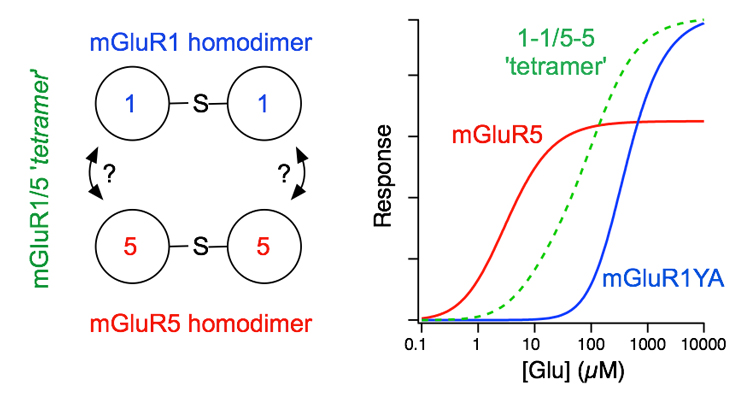Functional Consequences of Heteromeric Receptor Association
Functional Consequences of Heteromeric Receptor Association
mGluRs are known to function as obligate dimers. We and other labs have shown that the dimeric nature of mGluRs leads to certain pharmacological and functional consequences. For example, unlike most GPCRs which exist mainly as monomers, mGluRs require two agonists bound to each receptor dimer for activation. More recent work from the Kammermeier lab is beginning to show a novel interaction between specific mGluRs (mGluR1&5) in which receptor homodimers appear to interact in a way that each receptor allosterically modulates the function of its partner. We have evidence that an active receptor can promote activation of a bound partner, and an inactive receptor can promote the resting state in an otherwise active partner.

Important questions:
- Can we detect the physical interaction between mGluR1&5 biochemically?
- Is the interaction constitutive or induced by agonist?
- What are the physiological consequences of this reciprocal allosteric regulation?
- Do other GPCRs utilize similar allosteric mechanisms when they form dimers or higher order multimers?